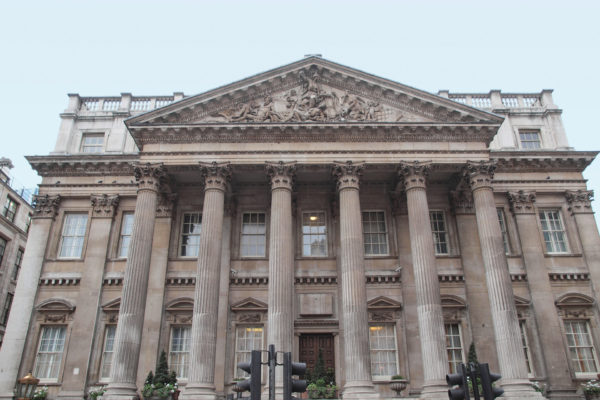
Why Do We Wear Poppies For Remembrance Day?
By
8 months ago
A refresher ahead of the weekend
It’s Remembrance Sunday this weekend (10 November), quickly followed by Remembrance Day itself. If you’re in need of a refresher, here’s why we observe both of these days.
Why Do We Observe Remembrance Day?
Remembrance Day is observed to honour and remember members of the armed forces who died in the line of duty. Previously known as Armistice Day and also often referred to as Poppy Day, it was initially observed to commemorate the end of World War I – specifically when the armistice was signed between the Allies and Germany on 11 November 1918 – but has since grown to encapsulate all military personnel who have lost their lives in all conflicts.
When the Armistice was signed in 1918, it marked the end of a brutal four-year long conflict that led to millions of casualties worldwide. We now call this World War I, but it was better known contemporaneously as The Great War: no such global-scale war had taken place before, and reflecting on the grave tragedy – and pledging it would never happen again – became an important part of Remembrance Day in its fledgling years, and the phrase ‘lest we forget’ became associated with remembrance observances. Indeed, many memorials and epitaphs are inscribed with only these three words.
In 1919, King George V proclaimed 11 November as Armistice Day, and a two-minute silence was held across the British Empire at 11am, encouraging the public to reflect on the importance of peace and the consequences of conflict. Of course, World War II would eventually break out in September 1939, and Armistice Day was expanded into Remembrance Day from 1945 onwards, commemorating the lives lost in both wars. Today, Remembrance Day honours military personnel who have lost their lives in all conflicts, not just World Wars.

When Is Remembrance Day?
Remembrance Day is held every year on 11 November, with a one or two-minute silence observed at 11am. Remembrance Sunday, however, takes place on the second Sunday of November (this year, 10 November), allowing communities to come together and honour the fallen with events more accessible than those held on a weekday. Observing both days ensures a focussed moment of silence on 11 November as well as community-wide reflection on Remembrance Sunday.
Why Do We Wear Poppies For Remembrance Day?
The tradition of wearing a poppy for Remembrance Day can be traced back to John McCrae’s famous WWI poem, ‘In Flanders Fields’. The Canadian doctor and soldier wrote the poem in 1915 after witnessing red poppies growing on soldiers’ graves in Flanders, Belgium. At the end of the war, inspired by McCrae’s words, American professor Moina Michael began wearing a red poppy in honour of those who died in the war, and encouraged others to do the same. In 1912, the Royal British Legion (which supports British veterans) adopted the poppy as its official symbol of remembrance, and it was the same year poppies were sold to raise funds for veterans, widows and dependents for the first time, a tradition which continues today.
The red poppy has come to symbolise remembrance, hope and resilience, with life sprouting after death in war-torn fields.
What Does A White Poppy Mean?
The pacifist movement has popularised an alternative to the traditional red poppy: a white poppy, which specifically represents a commitment to peace while rejecting militarism. It was introduced in 1933 by the Women’s Cooperative Guild and first distributed by the Peace Pledge Union in 1934. Some people wear both poppies, while others criticise white poppy wearers for politicising solemn ceremonies. In recent years, people have worn a poppy in solidarity with Gaza and other wars still being fought across the world.
When To Wear A Poppy
Traditionally, poppies are worn from All Souls’ Day (2 November) until Remembrance Day or Remembrance Sunday, whichever is later. The Royal British Legion, however, encourages people to wear a poppy whenever they like. Indeed, some people keep an enamel poppy pinned to their coat year-round.







